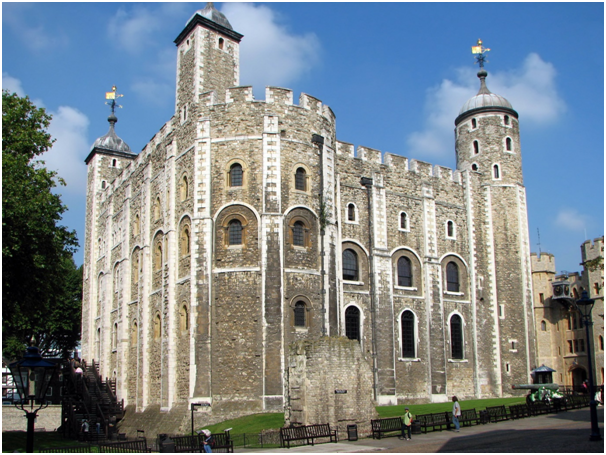The majestic Tower of London is one of the four UNESCO World Heritage Sites in the city of London and is one of the capital’s most visited tourist attractions. It has been used for many things during the course of its history including an armoury, a royal palace, a zoo, an execution chamber, a jewel house and a barracks. The tower is still a working royal castle and contains a fascinating thousand years of history.
The Crown Jewels can be seen here, which are made up of almost 24,000 gems. Tourists can enjoy guided tours from famous Beefeaters and explore the towers to see what imprisonment would have been in centuries past.
The Tower of London was built in 1066 by William the Conqueror, and is still one of the world’s most famous and iconic fortresses located on the north bank of the River Thames. It was founded towards the end of 1066 as part of the Norman Conquest of England. The White Tower was built in 1078 and was a hated symbol of oppression, inflicted upon London by the new Norman ruling elite.
From 1100, the castle was used as a prison and remained so until 1952. It started life as a royal residence and is a complex of several buildings set within two concentric rings of defensive walls and a moat. The castle has seen several phases of expansion, under Kings Richard the Lionheart, Henry III, and Edward I in the 12th and 13th centuries. Imagine how hard it must be to keep all that masonry clean from the pollution of London’s traffic. For Masonry Cleaning Services, visit https://www.stonehealth.com/
The Tower of London has played a huge role in the history of England. Many tried to lay siege as control of the tower meant control of the country. The tower was once the home of the Royal Mint and a public record office. From the early 14th century until the reign of Charles II, a procession would be led from the Tower to Westminster Abbey on the coronation of a monarch. If there is no monarch for any reason then the Constable of the Tower is in charge of the castle. As you can imagine, this was a powerful and trusted position in the medieval period.

The busiest time for the castle was when it was in use as a prison during the 16th and 17th centuries. Many famous figures have spent time in the tower including Elizabeth I before she became queen, Sir Walter Raleigh, and Elizabeth Throckmorton. Shockingly, despite its creepy reputation as a place of torture and death, only seven people were executed within the Tower before the World Wars of the 20th century. Executions were more commonly held on the notorious Tower Hill to the north of the castle, with 112 occurring there over a 400-year period. During the First and Second World Wars, the tower was again used as a prison and witnessed the executions of 12 men for espionage. After the Second World War, damage caused during the Blitz was repaired, and the castle reopened to the public.

